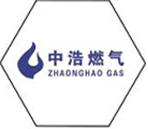
Dec . 09, 2024 17:37
Back to list
Natural Gas Pressure Regulation Station for Safe Distribution and Consumption
Understanding Natural Gas Pressure Reducing Stations
Natural gas is one of the most integral energy sources in modern society, serving homes, industries, and power plants. However, the transportation of natural gas requires a critical technology known as pressure reducing stations (PRS). These installations play a pivotal role in ensuring the safe, efficient, and effective distribution of natural gas from high-pressure transmission lines to lower pressure distribution networks.
What is a Pressure Reducing Station?
A natural gas pressure reducing station is designed to regulate and reduce the pressure of natural gas flowing through pipelines. Typically, natural gas is transmitted at very high pressures, sometimes exceeding 1,000 psi, to ensure that it can be transported over long distances. However, when this gas reaches the urban distribution system, it must be at a much lower pressure for safe use in residential and commercial applications.
A PRS is equipped with pressure regulators that lower the high incoming pressure to a usable level, usually between 60 to 80 psi for commercial use and 2 to 7 psi for residential applications. This adjustment is crucial, as the differences in pressure must be effectively managed to prevent leaks, explosions, or other safety hazards.
Components of a Pressure Reducing Station
Pressure reducing stations generally comprise several key components
1. Pressure Regulators These are the heart of the PRS. They automatically adjust the flow of gas to maintain a predetermined output pressure level, ensuring that the gas delivered is both safe and reliable.
2. Filter Systems To safeguard the regulators and other downstream equipment, filters are installed to remove impurities and debris from the gas. This step is vital to maintaining the integrity and efficiency of the entire system.
3. Safety Valves Safety is a primary concern in any gas distribution system. Safety valves are employed to vent excess pressure and to ensure that if there is any system failure, the pressure is released safely, avoiding potential accidents.
4. Monitoring Equipment Many modern pressure reducing stations incorporate advanced monitoring systems that provide real-time data on pressure, flow rates, and gas quality. This information is crucial for operators to make informed decisions and for proactive maintenance to avoid issues.
natural gas pressure reducing station

5. Control Systems Automatic and manual control systems are integrated into the PRS to facilitate the monitoring and adjustment of gas flow and pressure. This helps operators respond swiftly to any changes in the system.
Importance of Pressure Reducing Stations
The significance of PRS cannot be understated. Firstly, they enhance safety by reducing the risks associated with high-pressure gas. Properly functioning PRS systems help prevent ruptures and leaks, which can be catastrophic.
Secondly, they contribute to the economy. By efficiently managing gas pressure, these stations ensure that the energy is delivered effectively to consumers, thus facilitating industrial activities and domestic consumption without interruptions or inefficiencies.
Furthermore, environmentally, PRS can aid in reducing emissions. Efficiently controlled gas distribution decreases the chances of unburned gas leaks, which can release methane – a potent greenhouse gas.
Future Developments in PRS Technology
As the energy sector continues to evolve, advancements in technology promise to improve the performance and safety of pressure reducing stations. Innovations such as Smart Grid technologies and the Internet of Things (IoT) are beginning to be integrated into gas distribution systems. These technologies allow for enhanced monitoring, predictive maintenance, and real-time adjustments, leading to even safer and more efficient operation.
Additionally, as societies shift towards greener energy sources, PRS may also be reconfigured to accommodate biogas and hydrogen, presenting new challenges and opportunities for the natural gas infrastructure.
Conclusion
In conclusion, natural gas pressure reducing stations are essential components of the gas distribution network. They ensure that consumers receive safe and reliable natural gas, playing a vital role in modern energy systems. With ongoing technological advancements, the future looks promising for PRS, enhancing efficiency and safety as the global energy landscape continues to evolve. As we contemplate a sustainable energy future, the importance of maintaining, upgrading, and innovating in pressure reducing stations cannot be overlooked. They are, indeed, the unsung heroes of the natural gas transportation system.
Latest news
-
Safety Valve Spring-Loaded Design Overpressure ProtectionNewsJul.25,2025
-
Precision Voltage Regulator AC5 Accuracy Grade PerformanceNewsJul.25,2025
-
Natural Gas Pressure Regulating Skid Industrial Pipeline ApplicationsNewsJul.25,2025
-
Natural Gas Filter Stainless Steel Mesh Element DesignNewsJul.25,2025
-
Gas Pressure Regulator Valve Direct-Acting Spring-Loaded DesignNewsJul.25,2025
-
Decompression Equipment Multi-Stage Heat Exchange System DesignNewsJul.25,2025

